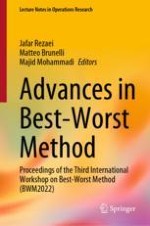This book presents recent advances in the theory and application of the Best-Worst Method (BWM). It includes selected papers from the Third International Workshop on Best-Worst Method (BWM2022), held in Delft, the Netherlands, from 9 to 10 June 2022. The book provides valuable insights on why and how to use BWM in a diverse range of applications including health, energy, supply chain management, and engineering. Moreover, it highlights the use of BWM in different settings including individual decision-making vs group decision-making, and with complete information vs incomplete and uncertain information. Academics and practitioners whose work involves multi-criteria decision-making and decision analysis will particularly benefit from the papers gathered here.
